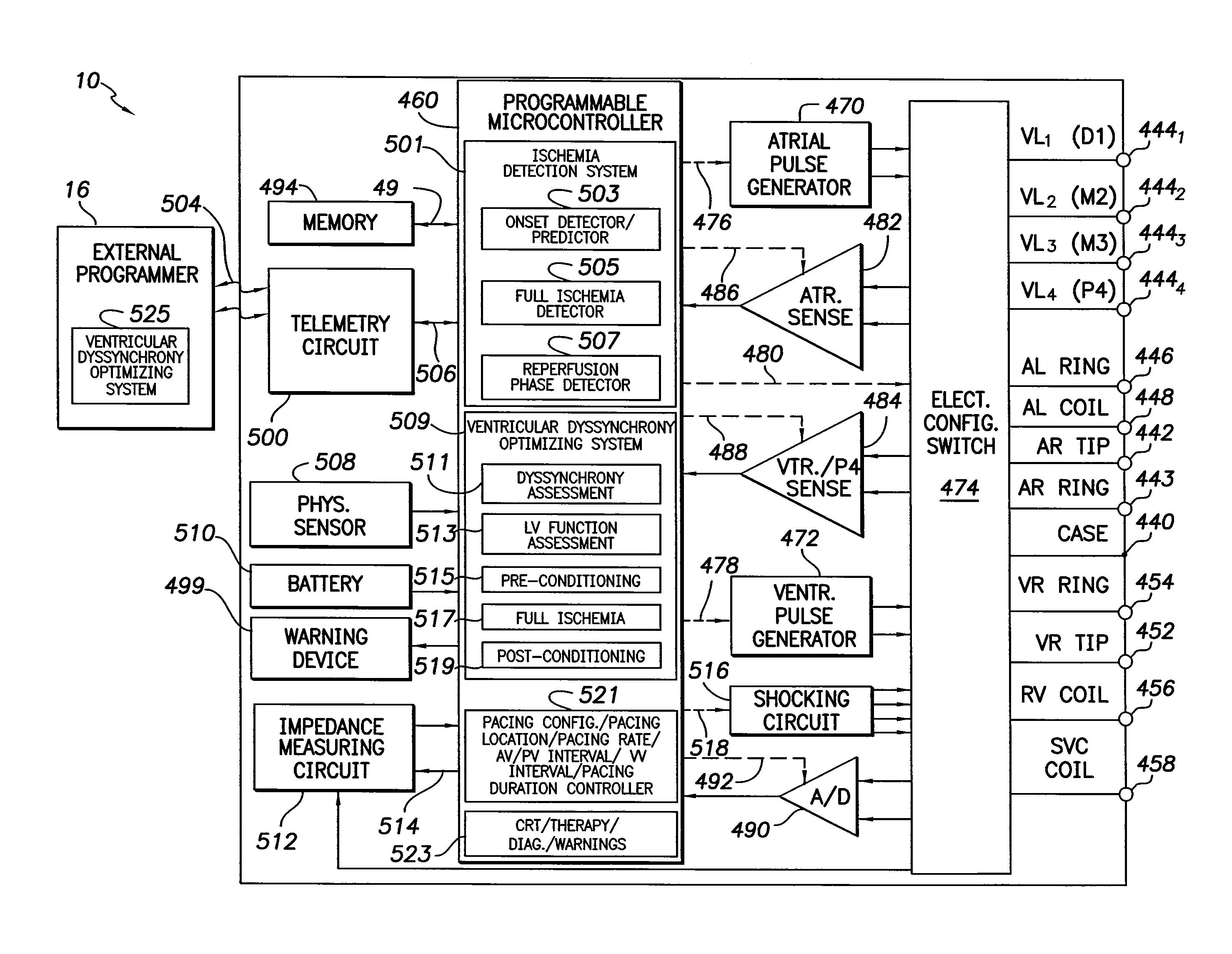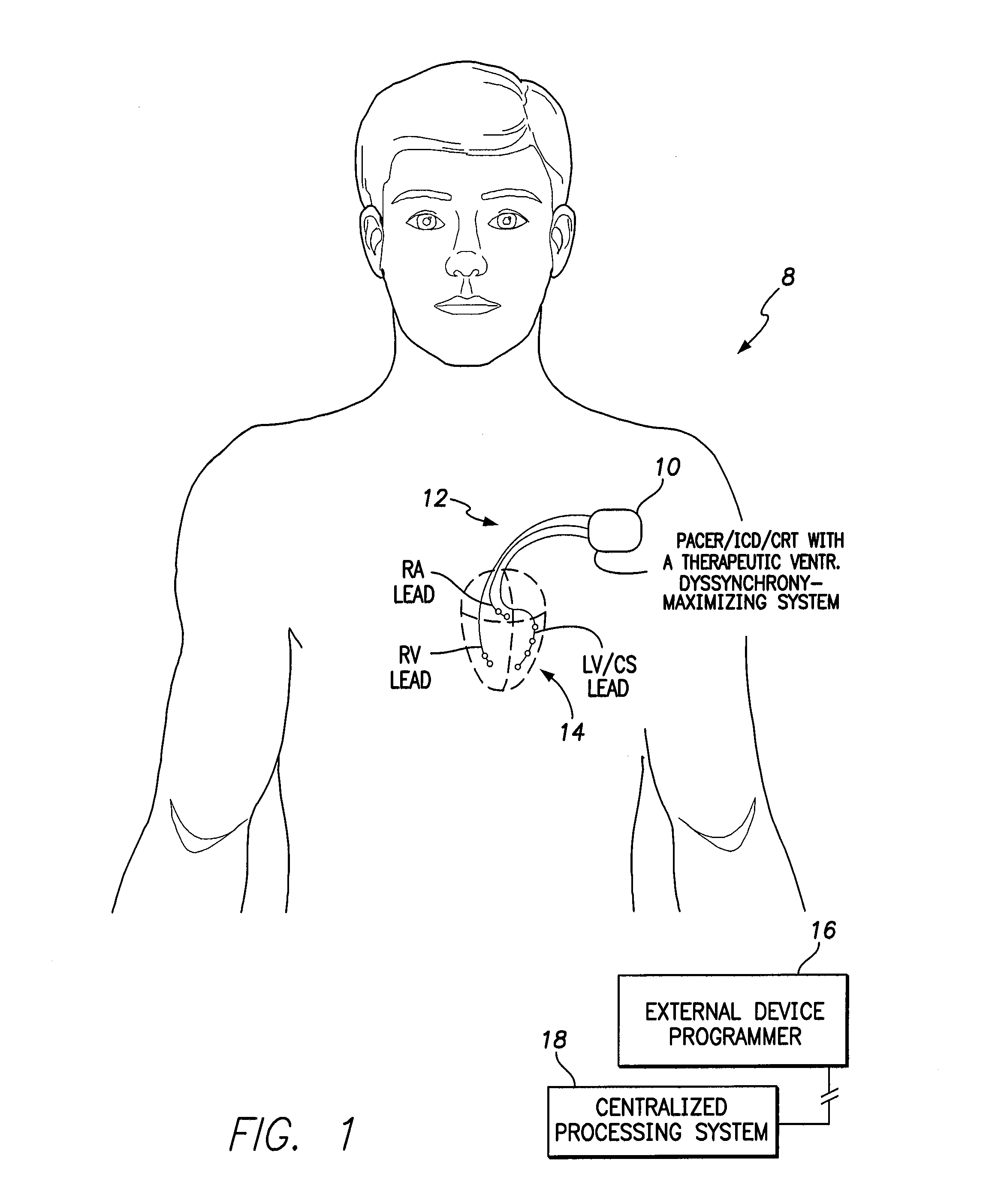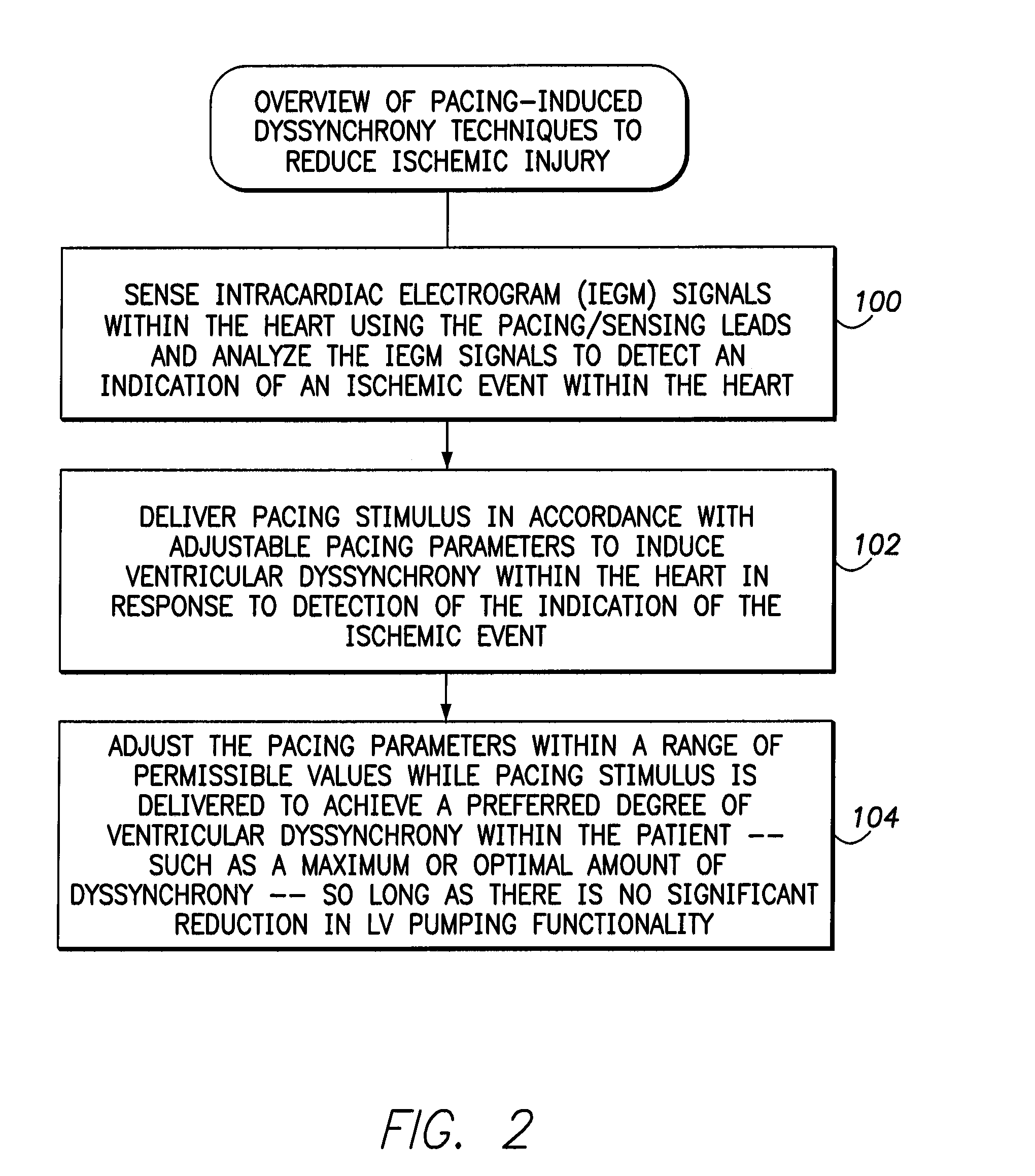Systems and methods for controlling pacing induced dyssynchrony to reduce ischemic injury using an implantable medical device
a technology of ventricular dyssynchrony and control system, which is applied in the direction of heart stimulators, electrotherapy, therapy, etc., can solve the problems of affecting the function of heart tissue beyond the blockage, and affecting the function of heart muscle beyond the blockage, so as to maximize the degree of ventricular dyssynchrony, optimize the degree of dyssynchrony induced within the patient, and avoid significant drop in lv pumping function
- Summary
- Abstract
- Description
- Claims
- Application Information
AI Technical Summary
Benefits of technology
Problems solved by technology
Method used
Image
Examples
Embodiment Construction
[0022]The following description includes the best mode presently contemplated for practicing the invention. This description is not to be taken in a limiting sense but is made merely to describe general principles of the invention. The scope of the invention should be ascertained with reference to the issued claims. In the description of the invention that follows, like numerals or reference designators will be used to refer to like parts or elements throughout.
Overview of Implantable System
[0023]FIG. 1 illustrates an implantable medical system 8 equipped with a therapeutic ventricular dyssynchrony-maximizing system for use in selectively inducing dyssynchrony prior to, during, and after an episode of cardiac ischemia. In this particular example, the implantable medical system 8 includes a pacer / ICD / CRT 10 or other implantable cardiac rhythm management device equipped with a set of cardiac sensing / pacing leads 12 implanted on or within the heart of the patient, including a multi-pol...
PUM
 Login to View More
Login to View More Abstract
Description
Claims
Application Information
 Login to View More
Login to View More - R&D
- Intellectual Property
- Life Sciences
- Materials
- Tech Scout
- Unparalleled Data Quality
- Higher Quality Content
- 60% Fewer Hallucinations
Browse by: Latest US Patents, China's latest patents, Technical Efficacy Thesaurus, Application Domain, Technology Topic, Popular Technical Reports.
© 2025 PatSnap. All rights reserved.Legal|Privacy policy|Modern Slavery Act Transparency Statement|Sitemap|About US| Contact US: help@patsnap.com



